No Mummies
We were promised that it was the “must see exhibition of 2013.” As we drove into the city, we saw that the light poles in Baltimore were festooned with flags promising passing drivers that they didn’t want to miss this once in a lifetime event. The Maryland Science Center was holding an exhibit called Mummies of the World. The ChickieNob could not have been more excited to get her Egypt on.
Image: Wonderferret via Flickr
Her brother opted out of seeing the exhibit, but my mother-in-law and I took the ChickieNob up to the second floor opening which was being guarded by an employee who gave us the rules: no cell phones, no photographs, no re-admittance upon exit. There was no warning about what we would see once we were inside, no question asked by the science center employee whether the ChickieNob was prepared. I guess based on what waited behind the curtain, I would have liked some sort of heads up. We entered knowing nothing about the exhibit, assuming that like all other exhibits we’ve attended at the science center, we would learn everything we needed to know at the exhibit. Since they are geared towards children, they usually don’t require research beforehand. Yet it would have been nice for this exhibit to come with a warning.
The ChickieNob had seen mummies before at the British Museum and the Smithsonian. And yes, there were some mummies that were exactly as we imagined: cloth-bound; lying in stone coffins.
But we weren’t prepared for mummies like the Orlovits family from the late 1700s. The family of three were unintentionally preserved in their pine coffins, and were now on display in the exhibit. (Warning: feel free to skip the links with images.) Or this woman, who was propped up in the same room. This just wasn’t what we expected. Nor the Detmold child from Peru.
This video gives you a sense of the exhibit (though I only found this video upon returning home):
The ChickieNob got through three darkened rooms, listening to the creepy quiet music playing in the background, before she paused near a priest’s sarcophagus and sank down on the floor, twisting her lip.
“I don’t know how I feel about this,” she told me. “All these people were in someone’s family. They were somebody’s mother. Or child. What if a museum put my family on display and everyone was walking through the room staring at you?”
The exhibit begins with an ethical statement, reminding visitors to be respectful of the dead. But it begs the question: can an exhibit of mummies ever be respectful of the dead? Is it respectful to put the dead in glass cases without their permission and allow visitors to gawk at them in the name of science? Are displays of mummies unethical? Or if there are no living descendents to offend, is it okay to put someone’s ancestor on display?
As we sat on the floor, I gave her the option to run through the rest of the exhibit and she took it. We booked it through the last few rooms, trying not to look too closely at the people in the cases, and only pausing if we passed an inanimate object. We popped out the other side, back in the hallway.
I’m not sure where I stand on mummy exhibits. I think the science itself can be done without creating exhibits. I think that while the exhibit should have come with a clear and visible warning, the vast majority of patrons would still proceed into the darkened rooms. Ancient civilizations are fascinating; the idea that you are looking at a person who was once walking around on this earth as you do now is gulp-worthy. Still, the difference between an exhibit such as Bodies and this one is the ability for the person or their family to give permission. Those people knew they were being preserved and going on display. These people had no clue they would one day end up in a museum.
There was a lot of care taken with the creation of this exhibit, from the educational materials to the special display cases holding the remains. But at the end of the day, does that care tell the whole story? Or as humans, do we need to be more circumspect on displaying humans without their permission?




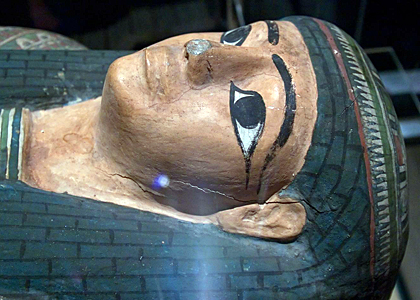

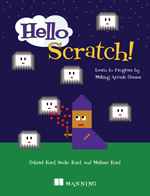
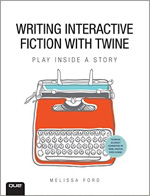
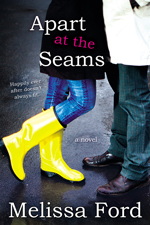
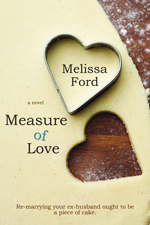
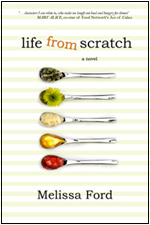
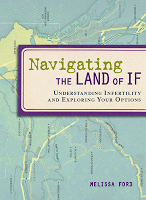


16 comments
I’m an archaeologist. Or was, I should say. I’m not currently. Anyway, no matter how fascinated I was by the remains unearthed, there is such a deep sense of respect and gratitude that anyone should have when handling or dealing with remains. Although I understand the reasoning behind putting them in a museum, I have always felt that they deserved to be transferred to a place of rest. Even digging them up in the first place – although it makes up most of my field – seems disrespectful. Hence why I didn’t last long in that field, I always felt so much grief for that person to have their body dug up, man handled and then sent to a University for processing.
I much prefer digging up pottery and spear heads. Or maybe I’ll just stick with office work like I’m doing now. No bodies, and no lost souls on my watch. Well, not yet at least.
Tangentially related is the 3D IMAX mummies movie there, which is understandably reverential to Egyptian history. We all played along until they showed the face of the mummy of Ramses 3 and pointed out that he’s the pharaoh of the Exodus.
Hm.
Made us immediately rethink our reverence for Egyptian history and realize that good and bad aren’t as neatly sifted from one another as stones from sand. It was fascinating to see a face from the Old Testament/Torah, as they pointed out, and maybe it was OK to invade his grave because of what he had done in his life…or maybe not?
I mean, after all, the man who led the Exodus was raised in the Pharaoh’s palace by the Pharaoh’s family. Similarly, we can’t separate our fascination with mummies, zombies, etc. from our fear of death and reverence for life. What draws us to them simultaneously repels us from them.
All this leave me where you conclude–where there are more questions than answers.
Such and interesting and thoughtful post, Mel. In a way, it kind of relates to the whole issue of accountability in science- there are many who believe that scientific research should be undertaken purely to benefit mankind in the present and the future (since the taxpayers are the ones funding it, in most cases), rather than for the simple pursuit of knowledge. In that case, aside from pleasing the voyeuristic masses, there really is no benefit whatsoever to digging up bodies and putting them on display.
Even if one does believe in scientific inquiry purely for acquisition of knowledge, as you have stated, the practice is ethically questionable. Consent is critical in medicine, and in dealing with the human remains of our friends and families, but the waters become very muddy when no friends or family exist. I see it all the time at work.
I’m not saying I believe one way or another… I’m just trying to point out another interesting twist here. And lets face it- I’m probably trying to stir up shit, because I’ve been home sick for two weeks, and I’m rather bored. 🙂
I hadn’t ever thought about it as your child questioned. I have a deceased daughter, mother, and father. I wouldn’t want them on display.
I’ve never felt comfortable with museum displays of mummies – and I’ve seen a lot of them in my life, in Peru it’s almost a point of national pride that the Incas and pre-Incan civilizations practiced mummification. And archaeologically speaking, it’s fascinating to learn about these ancient civilizations through the rituals they practiced around death. While I wouldn’t necessarily refer to the remains as “a person” or “an ancestor,” I also understand that the semantics around death and the physical remains of a no-longer living body are… tricky. I guess my bottom line is that I feel ambivalent about the practice of displaying mummies in museums, but I definitely do not like to look at them. It makes me very uncomfortable.
I’m going to go the spiritual route and say that maybe a person’s body-after-death (especially centuries or millenia) isn’t the same as the person. I’ve often wondered if a body is like a house you leave, move out of. And when that happens, it’s no longer “your” house spiritually, energetically.
I’m not convinced of my own answer or the direction of it, but your post will have me thinking for awhile…
For me, at some point, the body is no longer tied to the soul. When that point is reached I don’t know. As Lori stated above, I see the body as more like a house that is moved on from.
I mean, people donate their bodies ‘to science’ and who knows what all happens to them from the time they leave the morgue. Because they consented it is considered ok. But really think about what that means. What these corpses go through, all well relatively new to being corpses.
Heavy thoughts for a Monday after the holiday.
Mel knows how to grind the party to a halt 🙂
I’m OK with studying these remains, but not with exhibiting them, and, right, it’s about consent. Which isn’t exactly consistent, given that neither they nor their kin consented either to being studied or to being displayed. But I guess the potential benefits of advancing scientific knowledge to me outweigh the downside of neglecting consent, whereas those of exhibiting don’t.
That’s just a gut feeling, not a position I’m trying to defend.
And, right, I think one should know what one’s going to see before going into an exhibit like that, though perhaps it’s reasonable to expect viewers to know that such an exhibit will include the sorts of mummies you saw; I’m honestly not sure.
The description of the Detmold child in the article from which you drew that picture leaves me torn, thinking of the ALI world of which I’m a part and the baby loss mothers I’ve learned from here. I can easily imagine his mother (and father) feeling either way — wanting his remains kept private/sheltered, out of respect for the young sick baby they had tried and failed to sustain, or wanting them seen, for roughly the same reasons so that others could know of him and be aware of their loss.
Your post is really interesting and again brings up for me the way I now view things differently after having a child. I am much more emotional and much less analytical. I now view mummies as your daughter does – people who are part of someone’s family, which makes me thing of my family, and then makes me cry. I used to think mummies were so interesting and always wanted to see them if that was an option. Now, not so much.
I am so creeped out by mummies and exhibits of this sort that I have in my directives that I want to be cremated and the child I lost was also cremated. I am really uncomfortable about people speculating about me and my beliefs and values from my bones ….. it is so easy to draw false conclusions. For example if you dug up our garden 100o years from now, perhaps an archeologist would conclude that the bones of all of the little pocket pets buried there in elaborate burial clothes and decorations had some religious or other significance rather than being the pets of little girls who want to be a vet someday.
This is interesting. I had a quite strong reaction on visiting a church in southern Italy, that had a display of skulls and bones, from the people who were murdered by invading Turks (and supposedly refused to convert to Islam) many hundreds of years ago. I didn’t feel there was any dignity in the display of bones.
Yet, would I mind if in hundreds of years someone put my body on display. At this stage, I have to say no. Having been with my father when he died, one minute he was there, and the next he wasn’t. And when he wasn’t, his body became much less relevant. It just wasn’t him.
Thank you for this post. To add my own perspective, the question of whether or not it is ethical to display human remains without their consent has been a big problem for some indigenous communities. Native American burial sites and sacred places have been and continue to be looted, and human remains displayed in museums in the name of science and “history.” This causes at least two big problems: first, for the indigenous peoples’ descendants, removing their ancestor’s bones from the earth is spiritually destructive — both to the people AND to the earth where that person belongs, and second, these kinds of displays perpetuate the false idea that “indians are extinct” and that the people themselves no longer exist.
Here in my home state, the Oregon State Hospital is creating a new exhibit within the museum portion of the hospital where they will be displaying urns with ashes of former patients who died in the 1800s. When the tribes confronted the hospital about this and asked that they return the urns of those people who were identified as Native (since records indicate a significant portion of the unclaimed deceased were tribal members, often with no living immediate descendants due to the vast decimation of the people), they were told by hospital officials that the exhibit was for the museum and had nothing to do with them.
I’m with Lori. I’m in the unfortunate position of having had to identify my Dad’s body in a mortuary, and it wasn’t in a great state after an autopsy, let me tell you. Not much care had been taken to conceal that either. But – the overwhelming thought I was left with after the initial shock, combined with shrieking and collapsing on the floor was – he’s not in there anymore. It’s just the shell he used to live in, and he’s left that now. This might be stating the obvious, but a corpse is so devoid of life that even hours after the death, it doesn’t resemble that person anymore. This year I managed to pluck up the courage to go and see the BodyWorlds exhibit that came to Cape Town, and I was glad my curiosity about anatomy overcame my fear of a PTSD episode, because it was well worth it. I learned a tremendous amount about my own and other people’s bodies. However, as you say, there definitely is the whole “permission” aspect… I know I would not have gone to BodyWorlds had it been a similar exhibit that exists where permission has not been given.
Permission and respect to the dead notwithstanding, as a parent (ok, step-parent) to a very sensitive child, I would be LIVID if we went to an exhibit like this expecting what you typically think of…Egyptian mummies, gauze wrapped leathery looking mummies…and were faced with what you and Chickie Nob were faced with. I would have nightmares, I can’t imagine how she’s processing it. There should have been a disclaimer, a sign, a WARNING of some kind that what you were about to see was not your “typical” mummy exhibit. This is just…well…weird and WRONG. I have to question why really. What’s the reasoning for the displaying of these particular mummies? I’m not a fan of plain old dingy bandage wrapped mummies, let alone baby mummies? Parents on display with their dead children? I just can’t wrap my head around it.
Sorry this came out all weird…I’m all up in arms worried about how Chickie Nob is doing after seeing all this. 🙁
I was intending to leave a comment on this much earlier, but never got around to it, so people have already said much of what I was going to say: that consent feels critical to me, that even if the soul is gone from the body there we should respect the wishes of those who buried their dead to let them lie in peace. Perhaps that’s partly it, too: that it’s not just about the dead, but about their loved ones, the people who laid them to rest, trusting that they would do so. No amount of reverence in an exhibition still permits that.
But there’s a lot I have trouble with when it comes to museums. I believe in preservation of the past, and better understanding of history through science, but I also feel awkward about taking artefacts out of context, and re-contextualizing them in some ersatz version of their former homes.